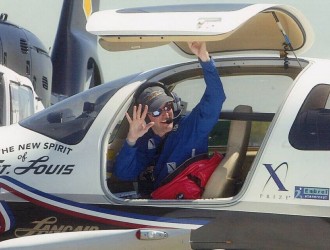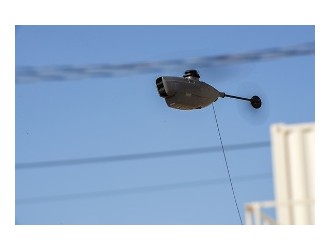
A decade or more in the making itself, Part 107 leapfrogged government and industry efforts to introduce larger machines into the airspace system, led by the NASA UAS Integration in the NAS Project started in 2011. That research effort, which has brought to bear NASA’s General Atomics-built Ikhana Predator B testbed, is contributing to minimum operational performance standards (MOPS) being developed by RTCA Special Committee 228. MOPS inform technical standard orders the FAA releases; these specify requirements for manufacturers to build equipment to the agency’s satisfaction.
Chartered in May 2013, RTCA SC-228 is developing equipage standards for command and control (C2) communications and detect-and-avoid (DAA) collision avoidance that will enable large drones to safely fly from the ground to Class A airspace above 18,000 feet.“We’re actually on the cusp now of getting standards published that would allow routine access to Class A airspace,” William Johnson, UAS Integration in the NAS Project chief engineer, told the conference. “once that is in place you will see a push to not only look at the lower altitude Class G operations and the high-altitude Class A, but how to bring those together. There are a lot of discussions going on about what that area between the two should look like.”
The first-phase MOPS document for C2 was published in August, specifying a terrestrial control link in the C-band. The RTCA committee completed work on a Phase 1 standard for DAA in December and expected to have it published for public consumption by March, but has been delayed in placing the document in the Federal Register by a Trump administration review of public notices. The expectation now is the standard will be published in July, said Paul McDuffie, SC-228 co-chairman and Insitu vice president of government relations and strategy, during a May 9 panel discussion.
Phase 2 MOPS will support sustained UAS operations at lower altitudes and incorporate satellite communications for the C2 link and ground-based sense and avoid (GBSAA) capability for the DAA requirement, McDuffie said. Envisioned for use in the terminal area near airports, GBSAA uses ground-based radars to track aircraft and help inform the drone operator of a potential midair conflict.
SC-228 expects to complete the second-phase standards in December 2020, making them available to the FAA to write technical standard orders. “We’re well on track for that. Even in spite of the delays that have been induced by our federal government, we have not stopped,” McDuffie said.
Speaking on another panel May 9, Davis Hackenberg, deputy project manager for integration with NASA’s UAS in the NAS Project, said the program envisions “IFR-like” and “VFR-like” operating environments for UAS at higher altitudes. Separately, NASA’s UAS Traffic Management (UTM) project is addressing operations of small drones at low altitudes. Part 107 currently constrains those types of drones to flying no higher than 400 feet above the ground, within the visual line of sight of the operator and only during daylight hours. Operations beyond those conditions require waivers.
The IFR (instrument flight rules) environment will be for Predator and Global Hawk-size drones that will take off from airports and transition through airspace levels with other air traffic to their planned mission altitudes. The certification processes for these aircraft—already flown by the Department of Homeland Security and U.S. Air Force, respectively—are more developed than for other drone types.
A VFR (visual flight rules) environment that doesn’t require controllers to be involved, which the drone community prefers, will be challenging to accomplish, Hackenberg advised. “You’re not working with these bigger aircraft anymore that are going to go up to higher altitudes,” he explained. “People are trying to downsize the aircraft—they’re going to be midsized and in some cases what we call ‘smalls’ today, but operating at higher altitudes that have a controlled airspace element to them. Clearly with these midsized aircraft and even the smaller ones, when you get into this more controlled airspace environment, there are going to be tons of challenges of certification.”





